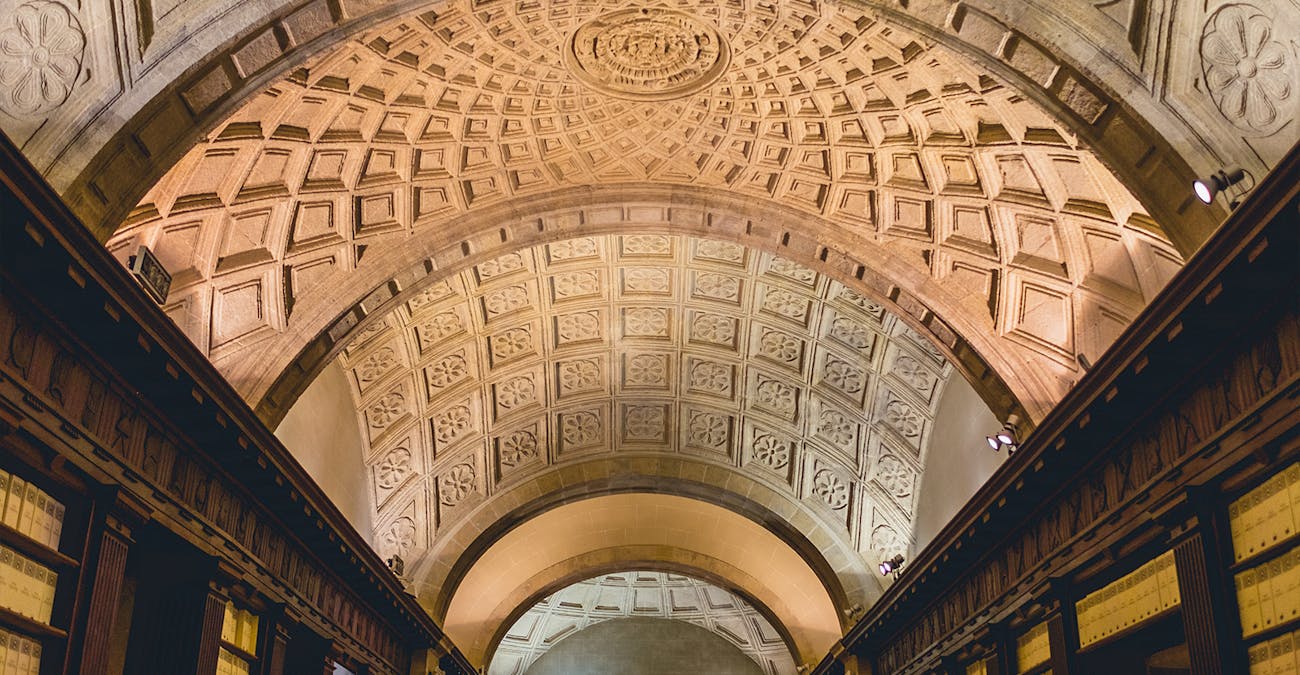The Roman Pantheon stands as a testament to the architectural prowess and spiritual devotion of ancient Rome. Originally constructed as a grand temple dedicated to the collective deities of the Roman pantheon, this iconic structure has endured the test of time, attracting visitors for over 1,800 years. With its awe-inspiring dome, symbolic oculus, and meticulous design, the Pantheon continues to captivate with its engineering marvels and artistic splendor.
1. From Roman temple to Christian church
The Roman Pantheon, built around 125 AD by the Emperor Hadrian (the same on of England's Hadrian's wall fame!), was originally dedicated to all Roman gods and goddesses but was later converted into a Christian church in the 7th century. Today it's a museum, and an example of peak architecture!
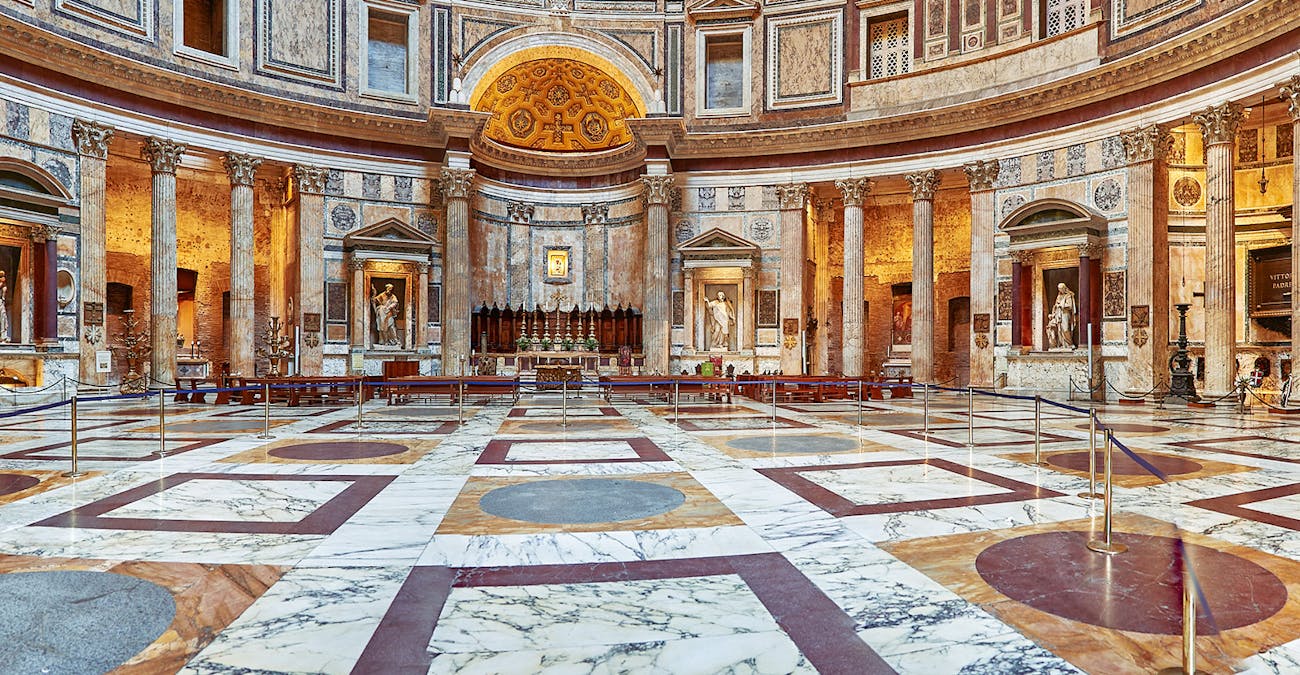
2. Largest unreinforced concrete dome
The dome of the Pantheon remains the largest unreinforced concrete dome in the world, with impressive dimensions of 43.3 meters (142 feet) in height and diameter. The dome's strength and stability are achieved through a strategic layering of materials, starting with a heavy concrete base and transitioning to lighter volcanic stone and porous rock as it rises. Additionally, the dome contains five concentric rings of coffers, which not only reduce the weight of the dome but also create a visually striking effect. This distribution of weight allows the dome to support itself without additional supports!
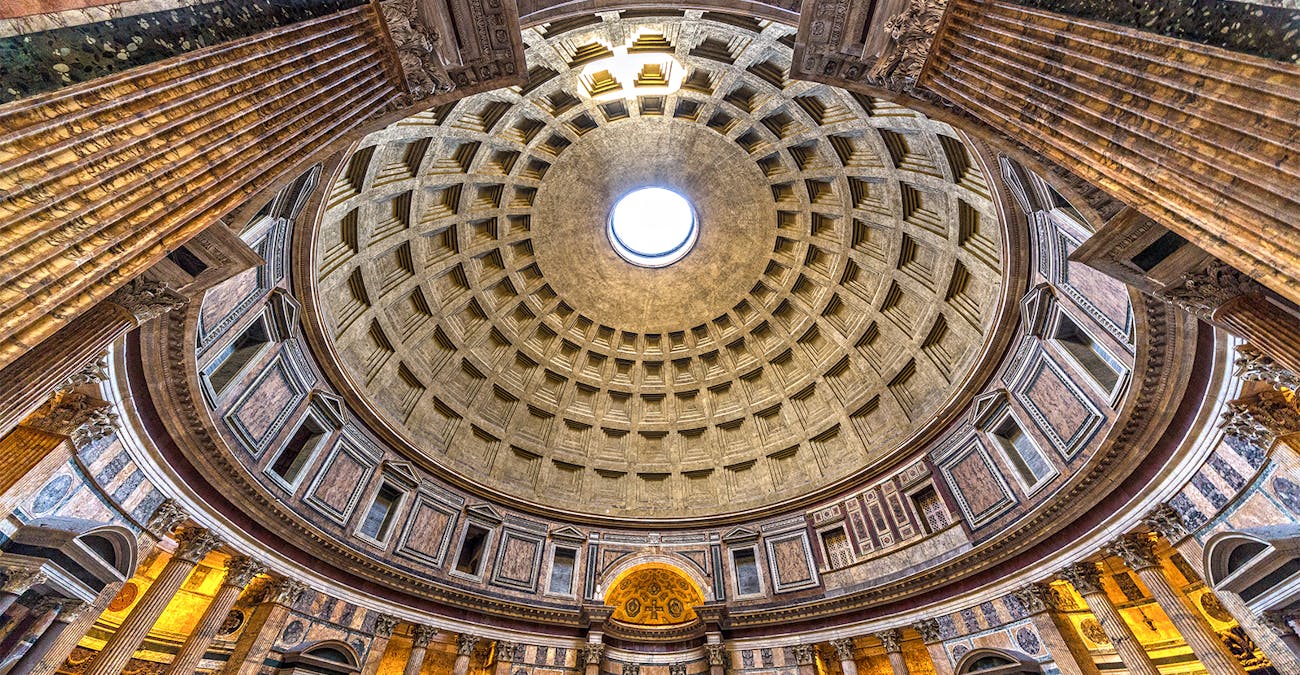
3. The Oculus: A window to the heavens
The oculus, a circular opening in the center of the Pantheon's dome, serves as the only source of natural light and was intended to symbolize the connection between the divine and mortal worlds. Located at the top of the dome, the oculus is a perfectly round opening with a diameter of approximately 8.8 meters (29 feet).
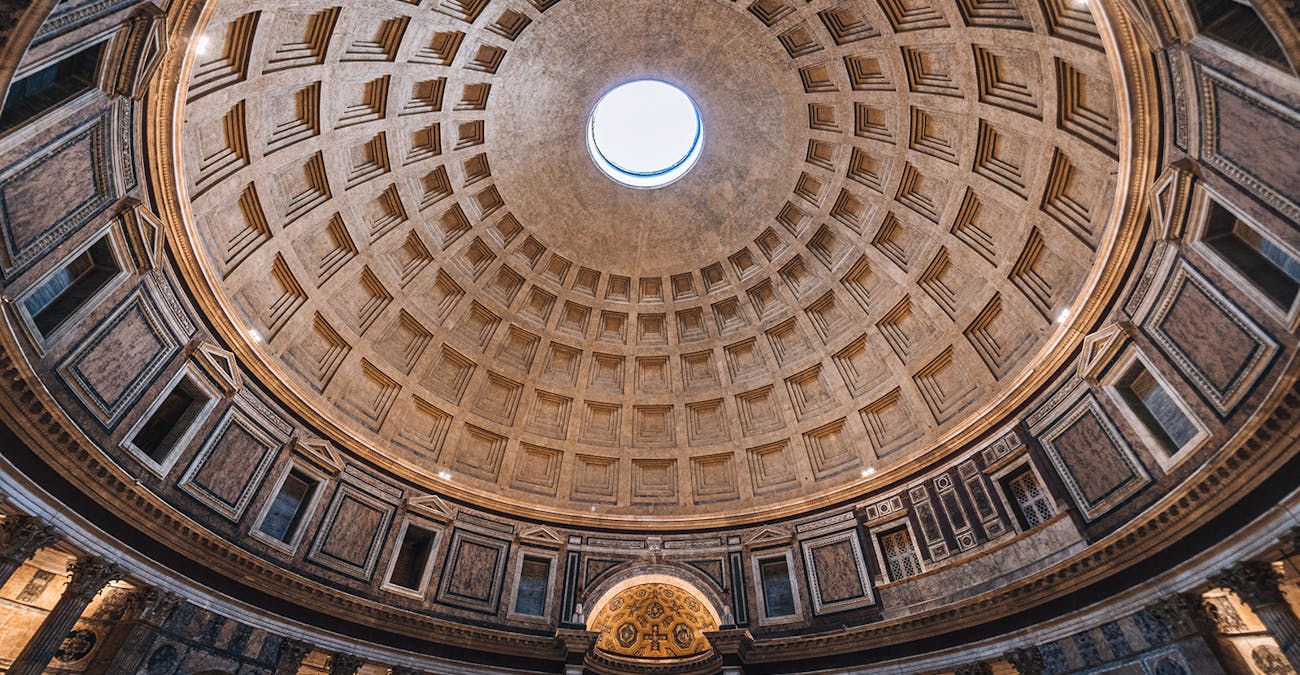
4. Pantheon means ‘All the Gods’
The word "pantheon" means "all the gods" in Greek, an ode to the origins of the Pantheon as a place of worship to the Roman gods.
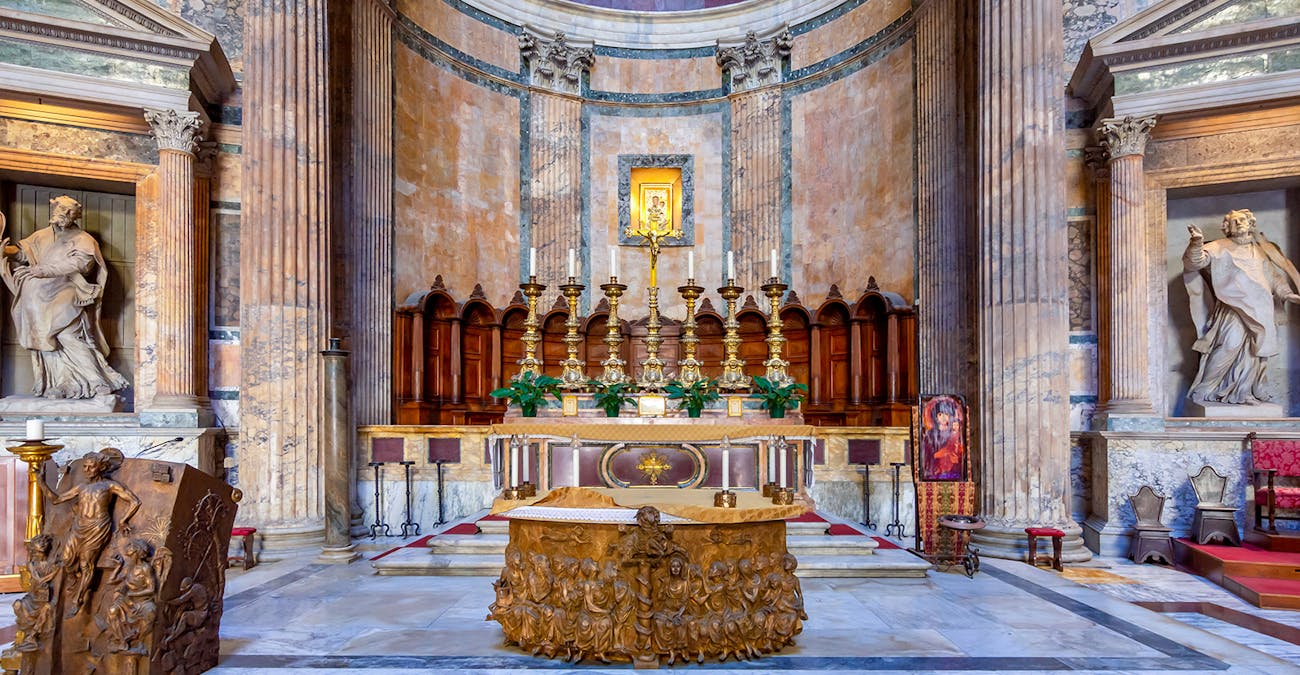
5. Bronze roof tiles melted for cannons
Pope Urban VIII, seeking resources for his military endeavors, ordered the removal of the valuable bronze tiles from the iconic structure. These tiles, known for their durability and beauty, were stripped off and melted down to be repurposed for a more practical purpose: the production of cannons. The cannons were intended to fortify the nearby Castel Sant'Angelo, a medieval fortress turned papal residence located along the banks of the Tiber River in Rome.
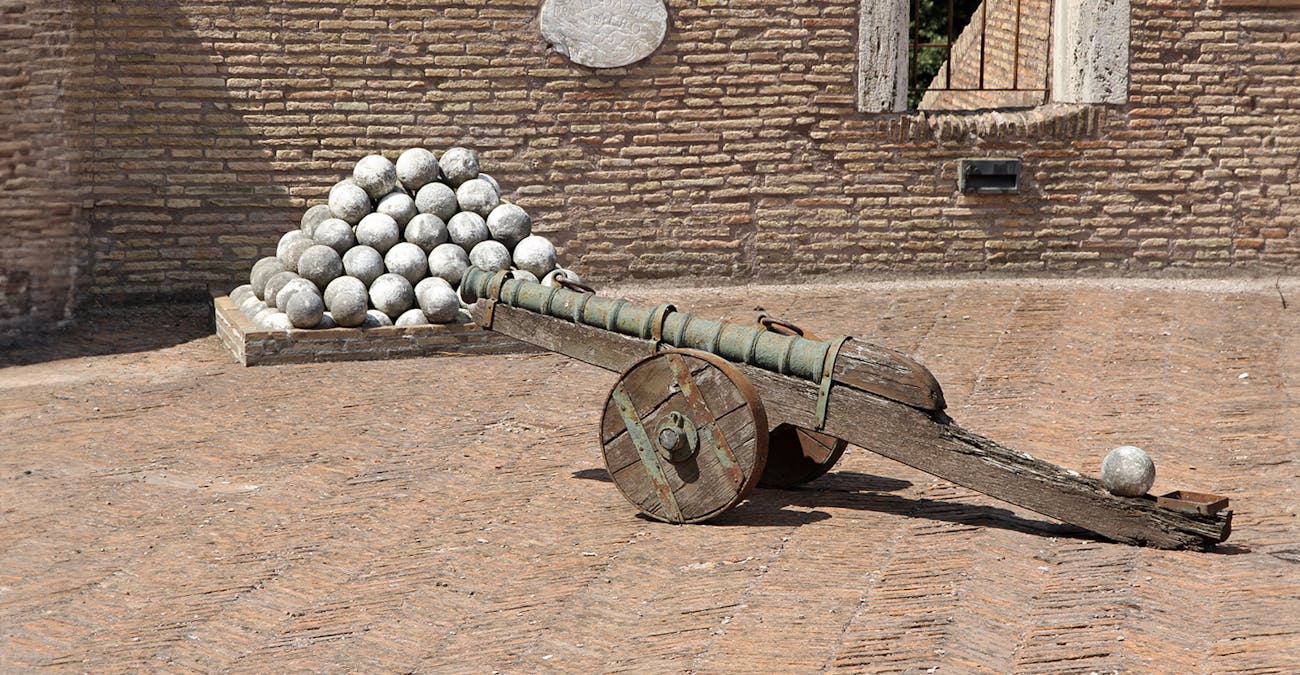
6. Bronze doors replaced with wooden ones
The original entrance to the Pantheon had two bronze doors, but they were replaced with massive wooden doors in the 19th century during a period of restoration and renovation. The reasons behind this substitution were likely multifaceted. Bronze doors, while undoubtedly impressive, require meticulous upkeep to maintain their appearance and functionality. Additionally, wooden doors can offer advantages such as ease of maintenance, repair, and customization.
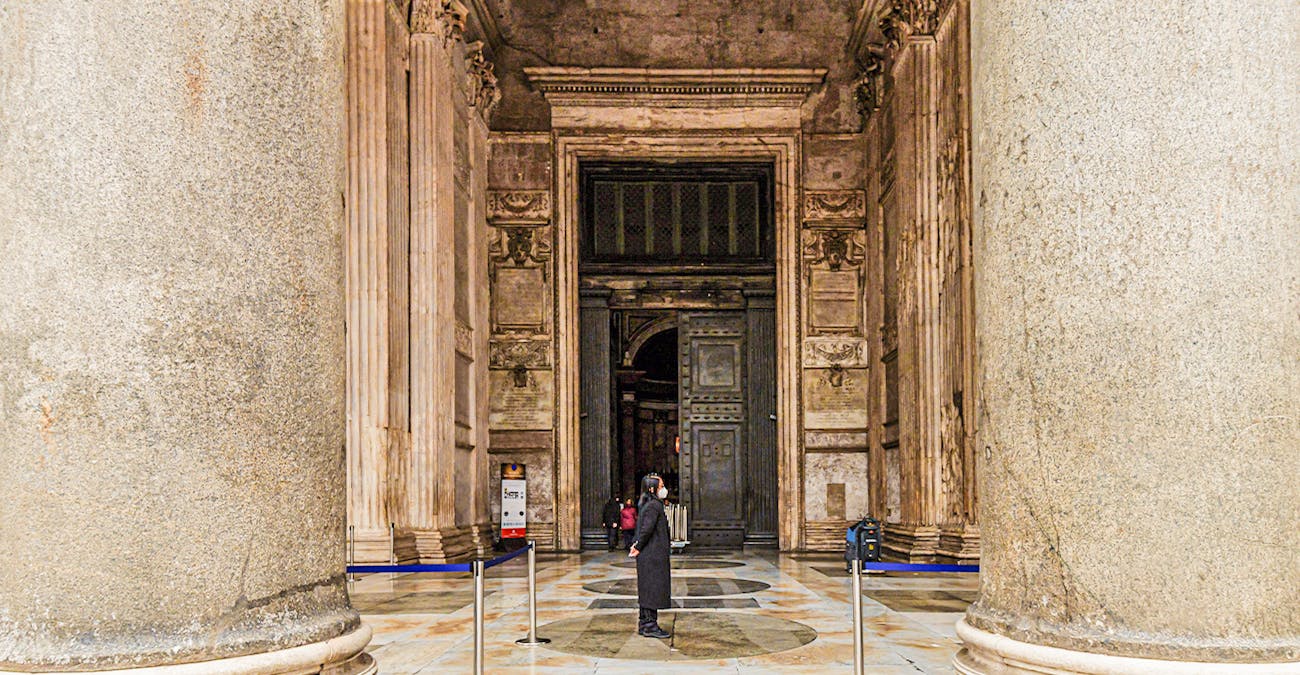
7. Inspiring Michelangelo and Brunelleschi
The Pantheon was a source of inspiration for many architects, including Michelangelo and Brunelleschi, who drew inspiration from its dome for their own architectural achievements. This inspiration is reflected in Michaelangelo's design of the dome of St. Peter's Basilica in Vatican City, and Brunelleschi's Florence Cathedral!
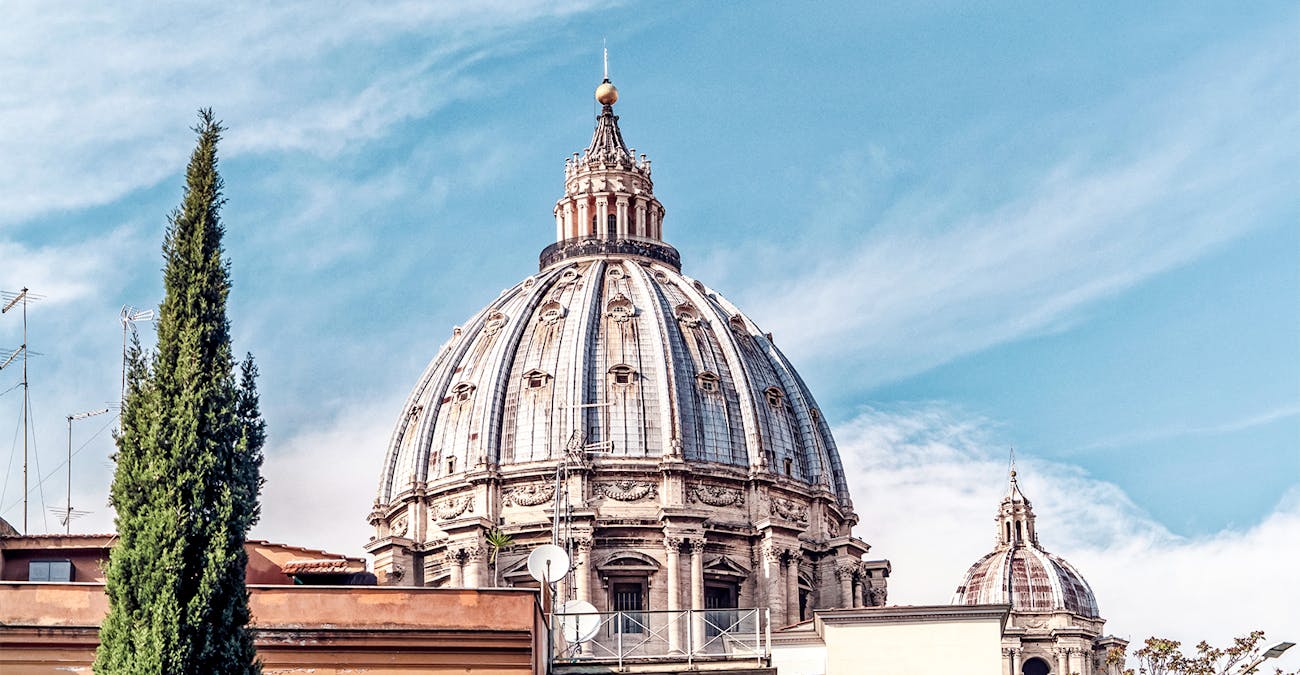
8. The third Pantheon after fires
You will be surprised to learn that the current Pantheon is the third iteration of the building, as the first two were destroyed by fire and lightning strikes!
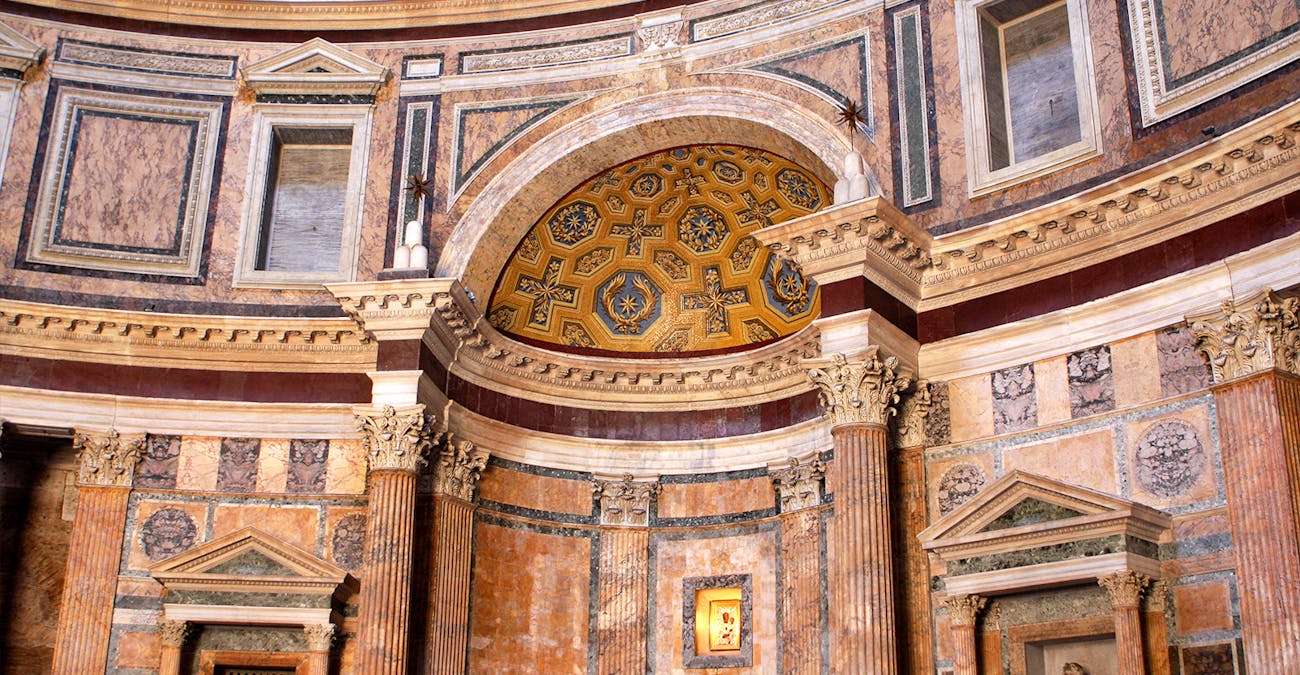
9. Raphael’s final resting place
The Pantheon happens to be the final resting place of the famous Italian painter Raphael, who requested to be buried there upon his death in 1520.
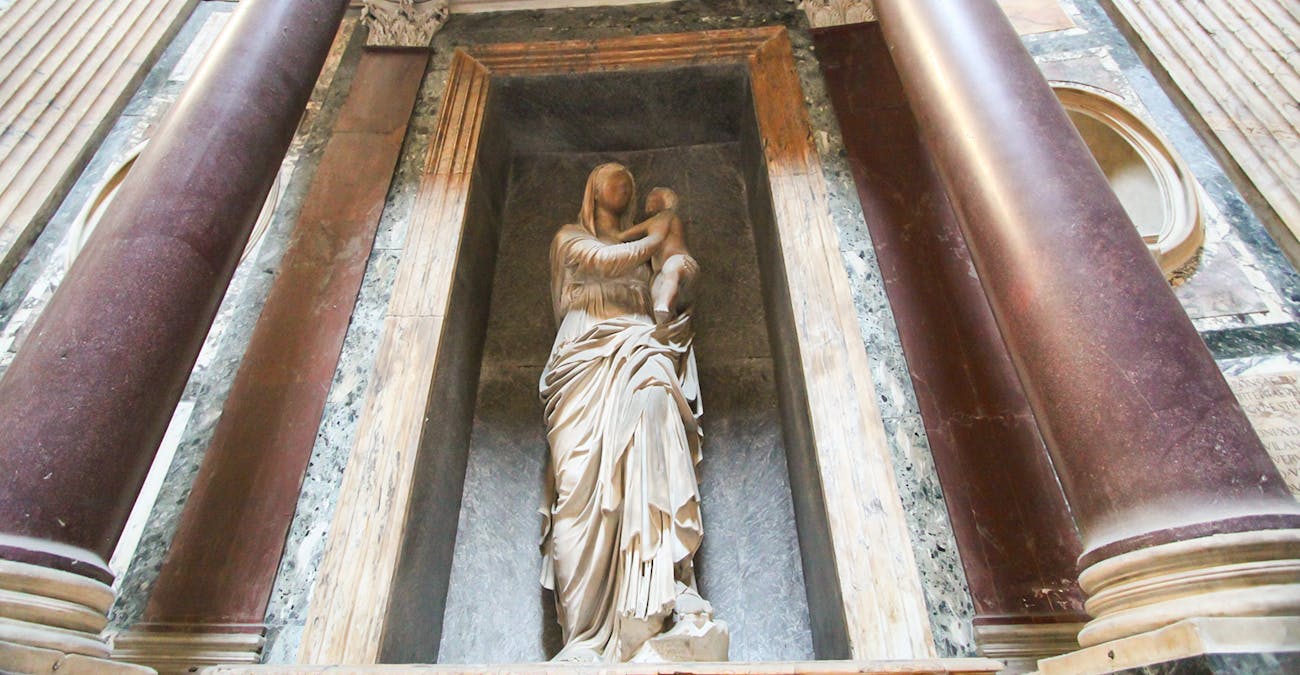
10. Marble from across the Roman Empire
The interior of the Roman Pantheon is adorned with a captivating display of marble columns, each sourced from different regions of the vast Roman Empire. From gray granite from Egypt to white-veined marble from Italy and multicolored Phrygian marble from Turkey, the varied marbles contribute to the Pantheon's visual splendor. Beyond their aesthetic appeal, the diverse marble columns symbolize the empire's extensive trade networks, highlighting its ability to acquire resources from distant lands.
